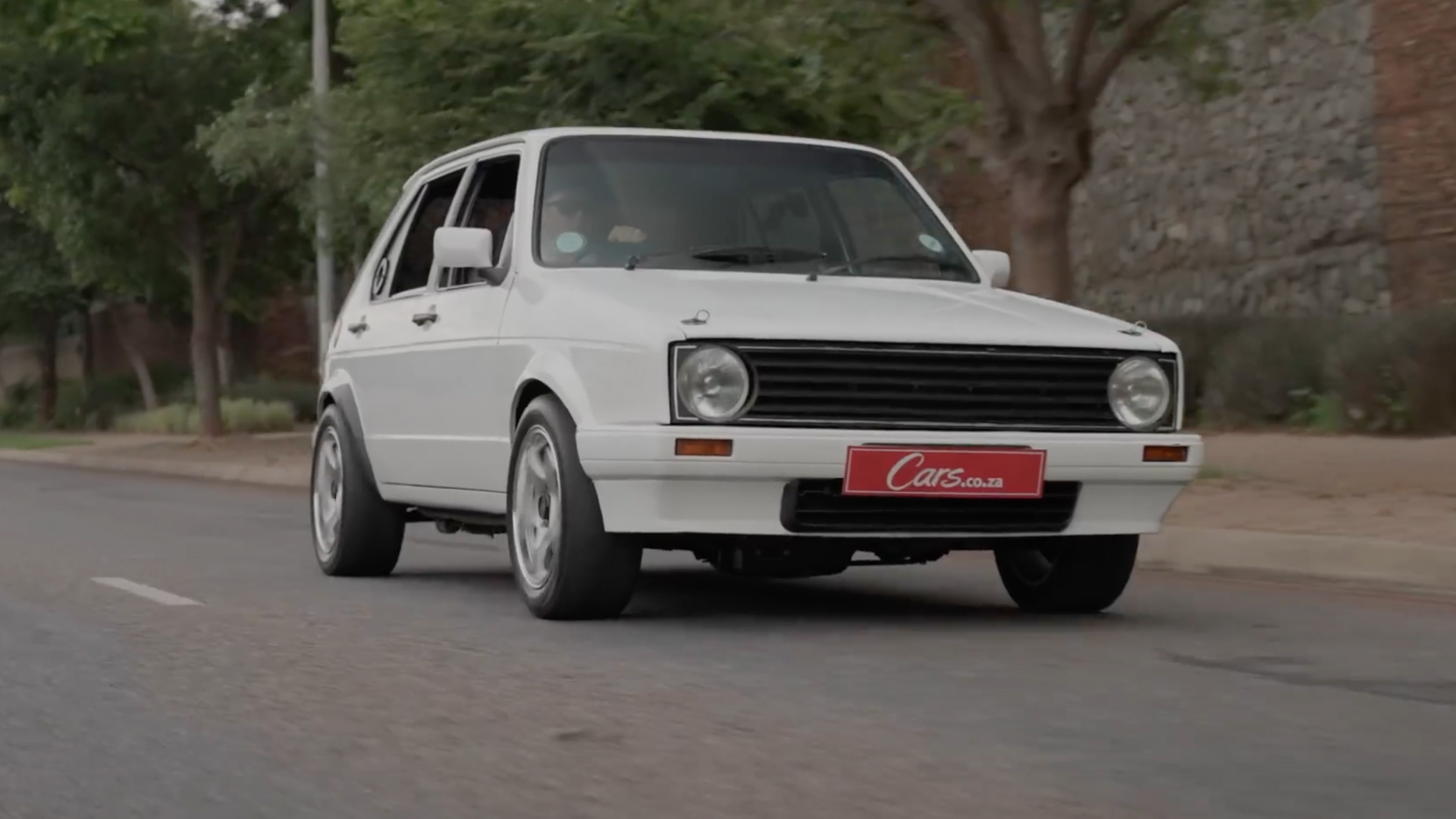

When it comes to tuning a car, more is usually better. Adding more fuel, more air, and more turbo boost are the typical methods of getting more power out of a car. But what about adding more engines? Willem Jacobus from South Africa decided that he wanted more power from his 1979 Mk1 Volkswagen Golf but instead of just tuning or turbocharging it like most tuners would, he added a second engine.
Up front, his Mk1 Golf packs a Volkswagen VR6 engine, which powers the front wheels through its standard five-speed manual transmission. That engine was swapped in years ago, replacing the original 1.1-liter four-cylinder. And Jacobus was content to live with just the normal VR6 swapped Golf until he saw another tuner’s videos of a twin-engine Golf and the idea was born to add another VR6 engine to its rear. So he ordered another engine, the motor mounts, and another gearbox, and custom fit it all into the back of the car.
The second 2.8-liter V6 engine powers the rear wheels but both engines are operated via the same gas pedal and with the same transmission. So one clutch pedal operates both of the car’s clutches and the same gear linkage operates both transmission’s gears. And while it requires two different starters, they’re simply operated with two separate buttons once the key is in. So in reality, as complex as it is, it sort of drives like a pretty normal all-wheel drive Golf. Just one that makes a lot more noise and a lot more power.

That wasn’t enough for Jacobus, though. After taking it to the track, he decided it needed even more power and fitted both VR6 engines with turbochargers. After putting the car on a dyno and testing the horsepower of each engine separately, and then together, Jacobus says the twin-engine Golf makes 536 horsepower (400 kW) and 590 pound-feet (800 Nm) of torque. However, the power is put down in an odd sort of manner. With its electronic engine management, Jacobus tuned the car to accelerate with its front engine first, letting the rear engine gradually come in shortly after. That prevents the rear from getting overwhelmed with power and sending the car sideways.
Twin-engine cars are fascinate me because it’s the way a child would expect to make a car more powerful: want more power, add more engine. But to actually engineer such a thing and make it function like a normal-ish car is unbelievably complicated and impressive. Jacobus deserves some serious praise for not only getting this car to work but to work well enough to drive on the road regularly.

Got tips? Send ’em to tips@thedrive.com